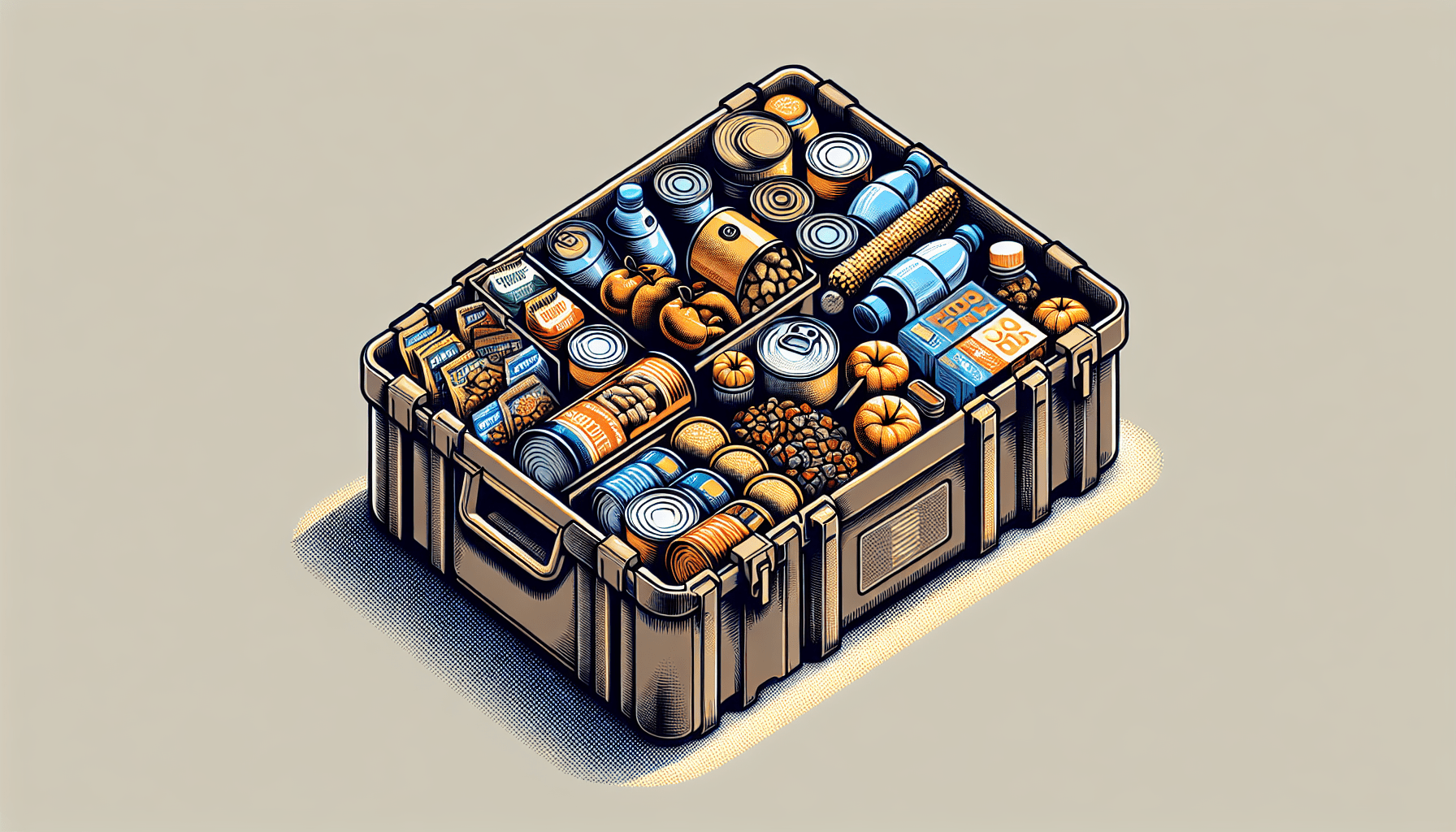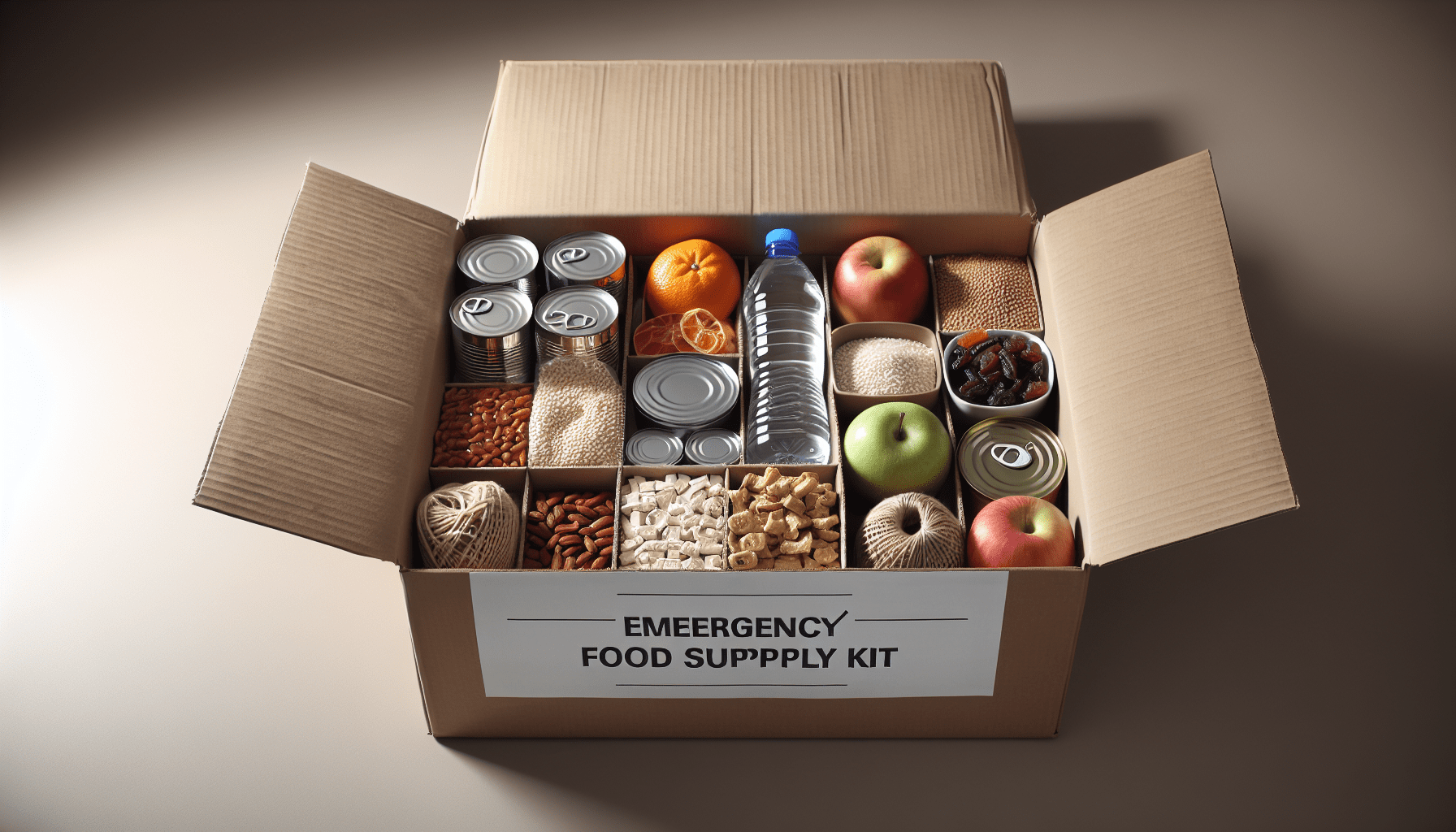What Is An Emergency Food Supply?” dives into the essentials of being prepared for unexpected situations by ensuring you have enough non-perishable food to sustain you and your loved ones. You will learn about the types of food that make the best choices for long-term storage, the importance of maintaining a balanced diet even during emergencies, and tips on how to manage your supplies effectively. Through this guide, you will be better equipped to face any crisis with confidence, knowing that your nutritional needs will be met no matter what comes your way. Have you ever wondered what an emergency food supply is or why you might need one? Well, you’re not alone! In today’s unpredictable world, having an emergency food supply can be a crucial lifeline. Whether faced with natural disasters, economic instability, or unexpected emergencies, being prepared can make all the difference. So, let’s dive into exactly what an emergency food supply is, why it’s essential, and how you can create one.
What Is An Emergency Food Supply?
An emergency food supply consists of non-perishable food items stored for use during emergencies. These supplies are specifically chosen to sustain you and your loved ones when regular food sources become unavailable due to crises such as natural disasters, power outages, or economic disruptions.
The Importance of an Emergency Food Supply
You don’t want to be caught unprepared when a disaster strikes. Having an emergency food supply ensures that you’ll always have access to nutritious food, even when the grocery store shelves are empty. It gives you the peace of mind knowing that you can sustain yourself and your family during challenging times.
Key Components of an Emergency Food Supply
Let’s break down the key components that make up a reliable emergency food supply. It’s not just about stockpiling canned goods; there’s a bit more to it!
Non-Perishable Foods
Non-perishable foods are a cornerstone of any emergency supply because they have a long shelf life. These foods can last for years without refrigeration, making them ideal for storage.
Examples:
| Food Item | Shelf Life | Nutritional Value |
|---|---|---|
| Canned Vegetables | 2-5 years | Vitamins, Fiber |
| Rice | Indefinite | Carbohydrates, Protein |
| Dried Beans | Indefinite | Protein, Fiber |
| Canned Meat | 2-5 years | Protein, Iron |
| Pasta | 2 years | Carbohydrates |
| Peanut Butter | 1-2 years | Protein, Fats |
Water Storage
Water is essential for survival. Aim for at least one gallon of water per person per day, for drinking and sanitation. You should store at least a two-week supply of water for each member of your household.
Nutrient Balance
While stocking up on food, make sure your selection is nutritionally balanced. It’s important to have a mix of proteins, carbohydrates, fats, vitamins, and minerals to keep everyone healthy.
Convenience Foods
In an emergency, you may not have the luxury of cooking elaborate meals. Therefore, include ready-to-eat meals and snacks that require little to no preparation.
Examples:
| Food Item | Type |
|---|---|
| Granola Bars | Snack |
| Instant Oatmeal | Breakfast |
| Soup Cups | Lunch/Dinner |
| Trail Mix | Snack |

Steps to Create an Effective Emergency Food Supply
Now that we know what goes into an emergency food supply, let’s talk about how to create one.
Step 1: Assess Your Needs
Consider the number of people in your household, any special dietary needs, and how long you want your food supply to last. Typically, a two-week supply is a good starting point, but a one-month supply is even better if you have the space.
Step 2: Make a Shopping List
Based on your assessment, create a shopping list that includes a variety of food items. Be sure to account for nutrient balance and convenience foods.
Step 3: Storage
Store your food supply in a cool, dry place away from direct sunlight. Use airtight containers to keep out moisture and pests. Rotate your food items periodically to ensure your supply stays fresh.
Step 4: Water
Don’t overlook your water supply. Store it in sealed, food-grade water containers. Consider getting a water purification system or water purification tablets for extended emergencies.
Maintaining and Using Your Emergency Food Supply
Once you’ve set up your emergency food supply, your job isn’t over. Regular maintenance and smart usage are key.
Rotate Your Stock
Use the “first in, first out” method to rotate your foods. This way, you’ll always have the freshest items available. Check expiration dates regularly and replace items as needed.
Monitor and Replenish
Regularly inspect your food supply for any signs of spoilage or pests. Restock periodically to ensure you have enough food for the intended duration.
Practice Makes Perfect
Familiarize yourself with the preparation methods of the foods in your supply. Practice cooking simple meals using your emergency food items to ensure you’re prepared when it counts.

Special Considerations
Every household is unique and may have special needs or circumstances that should be taken into account.
Dietary Restrictions
If anyone in your household has dietary restrictions (like gluten-free, vegan, or allergies), make sure your emergency food supply accommodates those needs.
Infants and Pets
Don’t forget about the youngest and furriest members of your family. Stock up on baby formula, baby food, and pet food to ensure everyone is covered.
Health and Hygiene Products
In addition to food and water, consider other necessities like medical supplies, hygiene products, and basic cooking tools.
Emergency Food Supply Alternatives
While creating your own supply from store-bought items is effective, there are other options available.
Pre-Packaged Emergency Kits
Many companies offer pre-packaged emergency food kits designed to last months or even years. These kits often come with a variety of dehydrated or freeze-dried meals and snacks that just require water to prepare.
Community Resources
Local communities often have resources like food banks and emergency services that distribute supplies during disasters. Familiarize yourself with these resources ahead of time.

Real-Life Scenarios
To give you a better understanding, let’s look at some real-life scenarios where an emergency food supply could be crucial.
Natural Disasters
Think about earthquakes, floods, hurricanes, or wildfires. These can disrupt food supply chains and make it difficult to access grocery stores. Having an emergency supply ensures you have what you need to weather the storm.
Economic Instability
Economic downturns can lead to significant challenges for many families. Having a backup food supply can provide financial relief and peace of mind during tough economic times.
Pandemics
As we learned during the COVID-19 pandemic, sudden lockdowns and supply chain disruptions can lead to panic buying and empty store shelves. An emergency food supply can help you stay safe at home and maintain social distancing.
Power Outages
Extended power outages can spoil the perishable foods in your refrigerator and freezer. Non-perishable emergency food items will keep you fed until the power is restored.
Conclusion
Creating and maintaining an emergency food supply isn’t just a good idea; it’s a necessary step in being prepared for the unexpected. Take the time to assess your needs, stock up on essentials, and keep your supplies fresh. You’ll thank yourself later when an emergency arises, and you’re ready to tackle it head-on.
Having an emergency food supply can give you peace of mind and ensure you and your loved ones are well cared for no matter what life throws your way. So, why not start today? Your future self will be grateful!
If you have any questions or need additional tips on creating your emergency food supply, feel free to reach out. We’re all in this together!


